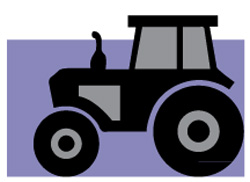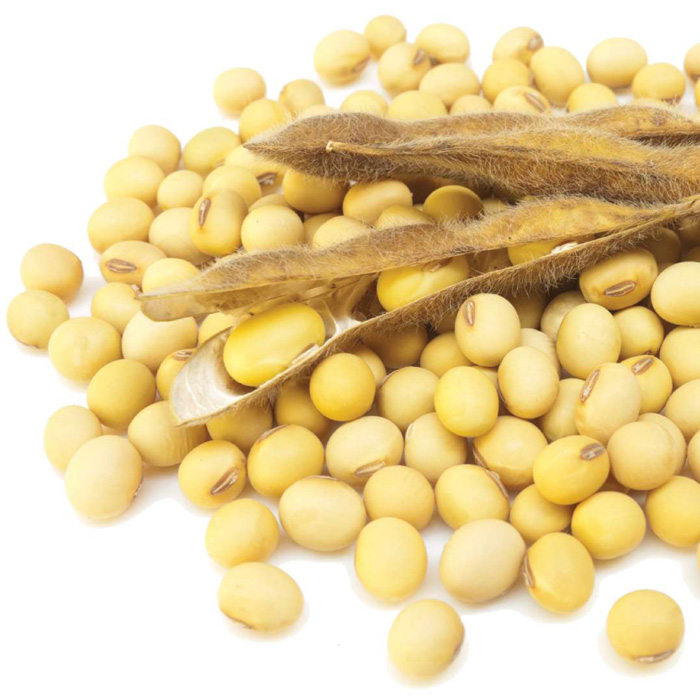July 2019
| Written by retired farmer |  |
The national crop estimates committee forecast on 26 March for the 2018/2019 soybean crop is a production of 1 276 035 tons (1,27 million tons) from a planted area of 730 500 ha’s.
The average yield per hectare being an estimate of 1,75 tons per hectare. The value of the national crop using an average Safex price of R4 750 for April to July 2019 is thus in the region of R6 061 000 000 or in short 6 billion rand.
The current crop will be less than the 1,5 million tons of the 2017/2018 season and the 1,3 million tons of the 2016/2017 season.
Most farmers will deliver their crop to the nearest registered grain silos from their farm and accept the ‘spot’ price offered by their co-op or other co-op’s operating in their production region.
The demand for soybeans largely comes from the crushing or processing industries which will usually purchase the soybeans delivered to the various co-ops with registered silos. The soybeans are processed into soybean meal for the livestock feed industry and oil for human consumption.
QUALITY STANDARDS – WHAT DO THE BUYERS LOOK FOR?
Your soybean or soya bean crop must meet the minimum standards for seed quality as laid down in the Agricultural Product Standards Act 1990 (Act No 119 of 1990) with any relevant amendments up to the 21 April 2017. These legal standards are used throughout the soybean value marketing chain to ensure that the product can be bought and sold with confidence by all parties and companies involved. The document is available from the following website: sagis.org.za and should be read by all farmers producing soybeans.
The weight or mass of individual soybean seeds or kernels can vary from 11 grams per 100 seeds under bad drought conditions to 18 grams per 100 seeds in good years for soybeans grown under good management and high soil fertility conditions. Most acceptable seed samples will contain a range of seed sizes from 15 to 18 grams per 100 seeds.
In brief, soybean seeds that meet the above standards are graded and sold as class SB1 soybeans.
PERMISSIBLE DEVIATIONS
Listed below are the maximum permissible deviations within a sample that meets the standards required.
 Wet pods – 0,2%.
Wet pods – 0,2%.All buyers and users of soybeans can thus be confident that trade or purchase agreements made in the industry are of a known expected quality and standard.
The above summary indicates that there are a few very important criteria to keep in mind before delivering your crop to a registered grain silo. At this point if you have delivered an under-grade sample and it has been taken in by the co-op, it will be very difficult to have the seed upgraded and a large loss on this particular load will be incurred.
PRACTICAL CONSIDERATIONS
The cycle for the production of quality seed really starts from before planting with the selection of the right cultivars, through planting and the management of the crop throughout its growth phase to physical maturity and finally the harvesting. It can be seen from the grading standards that Sclerotinia infestations must be avoided at all costs. This can be done by careful monitoring your lands and crop for the disease and using the appropriate crop rotations to avoid infections in any current or future crops.
The most important key to a good grade for most farmers is doing the best harvesting operation possible. The correct settings on the combine for the optimum drum speed and proper sieves to take out the very tiny seeds as well as blowing out as much foreign material as possible in the process and avoiding stones going onto the combine table are critical. The combine make and thrashing system used and state of the crop at harvesting will influence the correct settings to be used. It is very important that the farmer be on the land during the harvesting process either when using his own machines or that of a contractor.
Remember that if you are forced to deliver to the co-op directly from the land you need to produce the best sample possible. Always take an early sample from the first combining to your co-op to be tested so that you know that the quality will be acceptable.
CONCLUSION
Know the standards required for SB1 seed and try to achieve this by good management through all the phases of production to harvesting.
Publication: July 2019
Section: Pula/Imvula